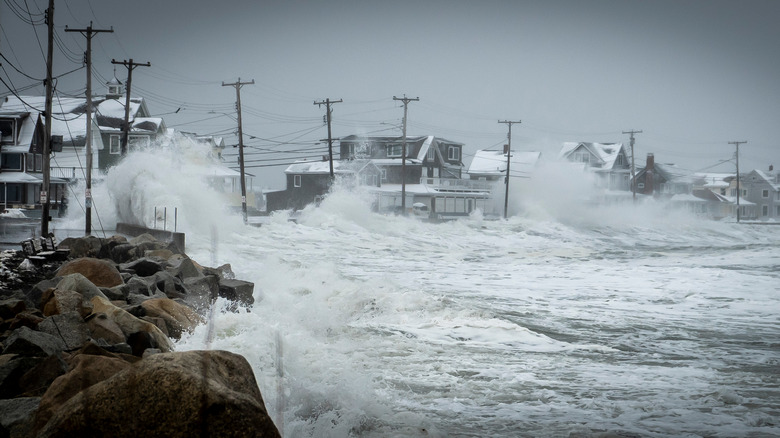This Green Energy Source Could Undercut Solar
Renewable energy technologies are a fantastic and ever-changing segment of the world of technology. Today, researchers are finding innovative ways to improve solar cells, capture phenomenal amounts of wind energy, and a group of designers has even pioneered a novel means of capturing tidal swell energy. A research team from Australia recently concluded a pilot run of the tech, which is called UniWave.
Essentially, the device works like a natural blowhole found in coastal rock formations. There is a cavernous underwater space and an aerial segment filled with a cordon of air. Wave Swell Energy, the company behind the UniWave device, reports that as wave energy rushes toward the shore, the air inside the unit is pushed out through a valve, which closes to create a vacuum when the water drops back down. That vacuum pulls in outside a through a turbine, creating energy in the process. This energy capture device is based on the idea of the oscillating water column and doesn't require a certain type of weather to function properly.
Unlike solar panels or wind turbines, the waves routinely pound against the shore, with the only real change coming in the height of each wave during high and low tides throughout a lunar cycle and daily shifts. This technology has the capacity to revolutionize the way that humans think of renewable energy generation because the unit seemingly creates no adverse environmental impact, with a potentially net-positive occurrence as a consequence. In a recent interview (via CNET), the CEO of Wave Swell Energy reported that the device actually attracted an abundance of marine life.
Efficiency ratings are already on par with other renewables
The wave capture technology is making headlines because Wave Swell Energy just recently completed a year-long test of the unit's capability in Grassy Bay on the southeast coast of Australia's King Island. After a year of operation, it has become abundantly clear that this option for generating electrical power is viable and highly efficient. It should be noted that this location was selected because it experiences a wide range of wave conditions, rather than a more uniform swell throughout the tidal shift and year more broadly (via PV Magazine).
PV Magazine also reports that the UniWave was able to generate a consistent output of 200kW of power throughout the year. The technology achieved roughly 50% efficiency (which is on par with peak wind turbine efficiency, according to EDF Energy), and an 80% availability rating, according to World Today News (meaning an uptime of about 80%). Each of these figures places this new wave capture technology squarely within the conversation of high-quality renewables, and directly alongside both solar and wind power.
What's truly remarkable about these figures is the fact that they were achieved from a prototype model designed specifically to test the viability of the concept rather than peak performance metrics. The next iteration of the UniWave device is likely to perform even greater feats of energy capture, driving the conversation about how to harness the renewable elements of our world ever farther ahead.
Blowhole units can be utilized as part of other partly submerged structural designs
One thing that makes these devices immensely valuable in the conversation surrounding renewable energies is their utility as more than simply an energy conversion unit. Aside from the already impressive electricity-generating statistics that these artificial blowholes have produced, the unit is a sizeable installation and therefore can be built into existing or future seawall projects to provide a component of the barrier while also capturing the sea's churning energy at all times.
Wave Swell Energy notes that the only moving parts in the device are those within the turbine unit and that the device requires no lubricants or other potentially ecosystem-altering additions. Therefore, maintenance is simple, and technicians will essentially only have to work on components that reside above the waterline.
The technology is truly remarkable, and it stands poised to change the way Pacific Island nations protect their shorelines and create renewable and lasting energy for the foreseeable future. While this first prototype is just that, it signals great things for the future of renewable technologies and the maritime environment more broadly.


